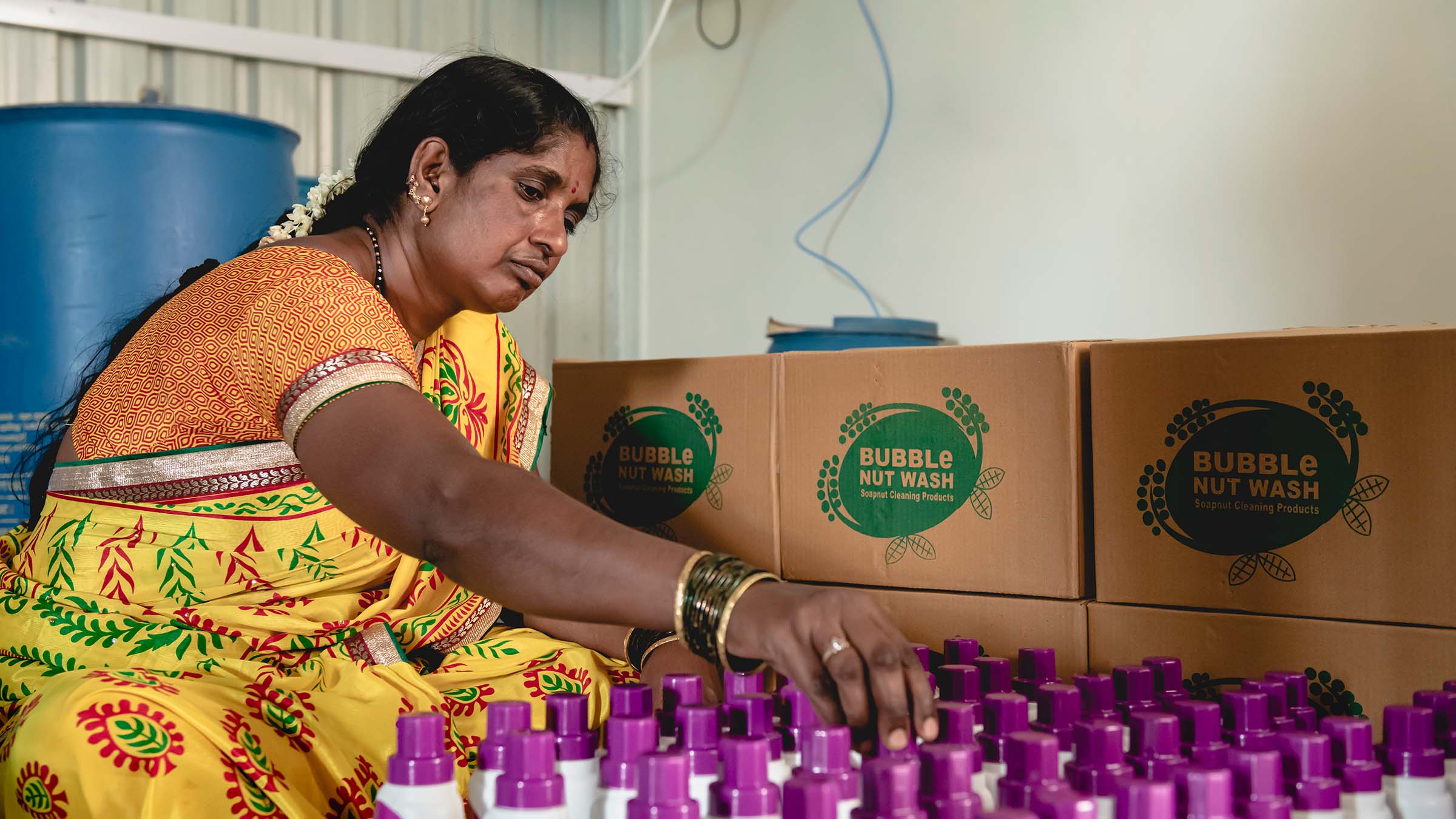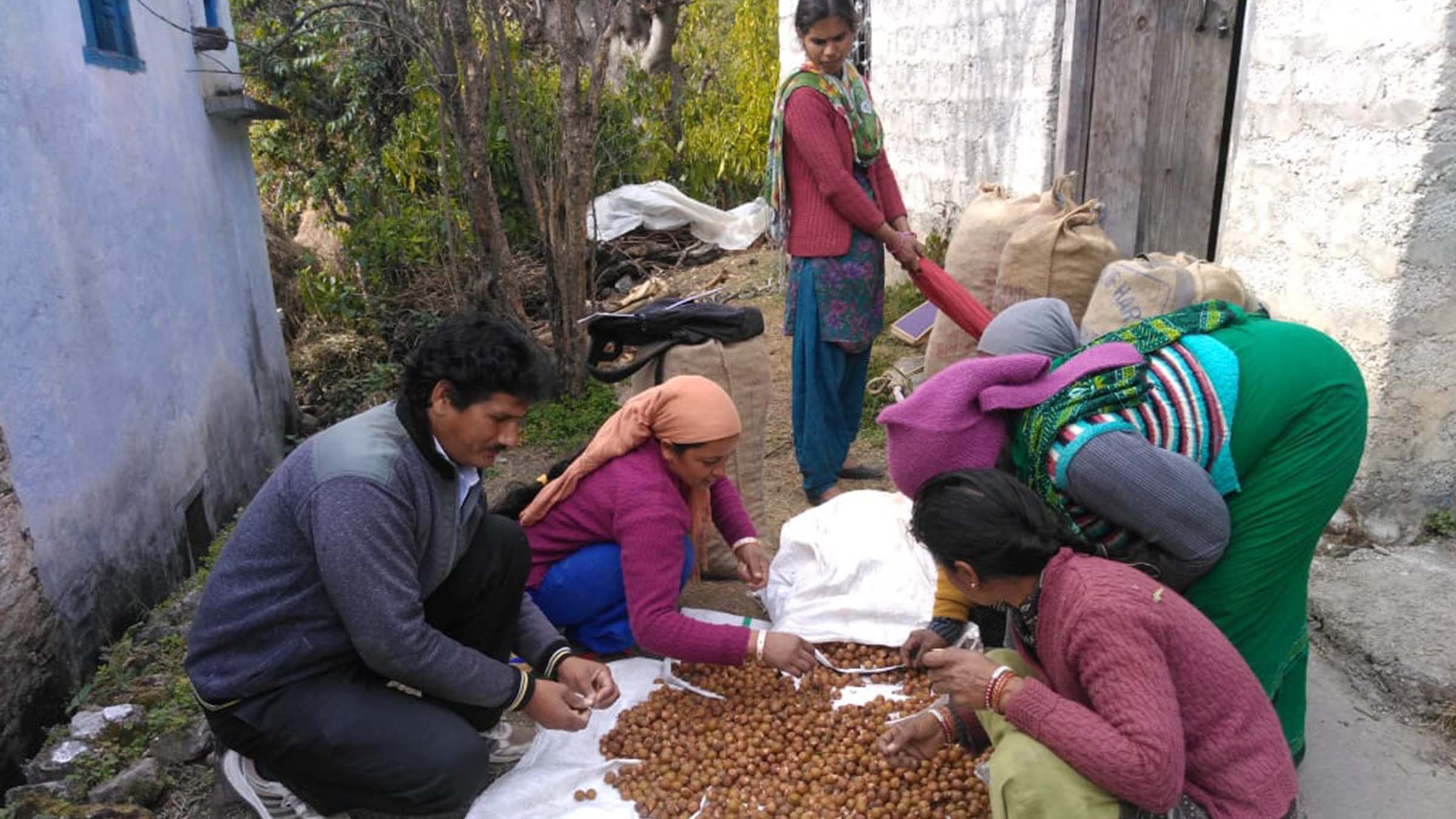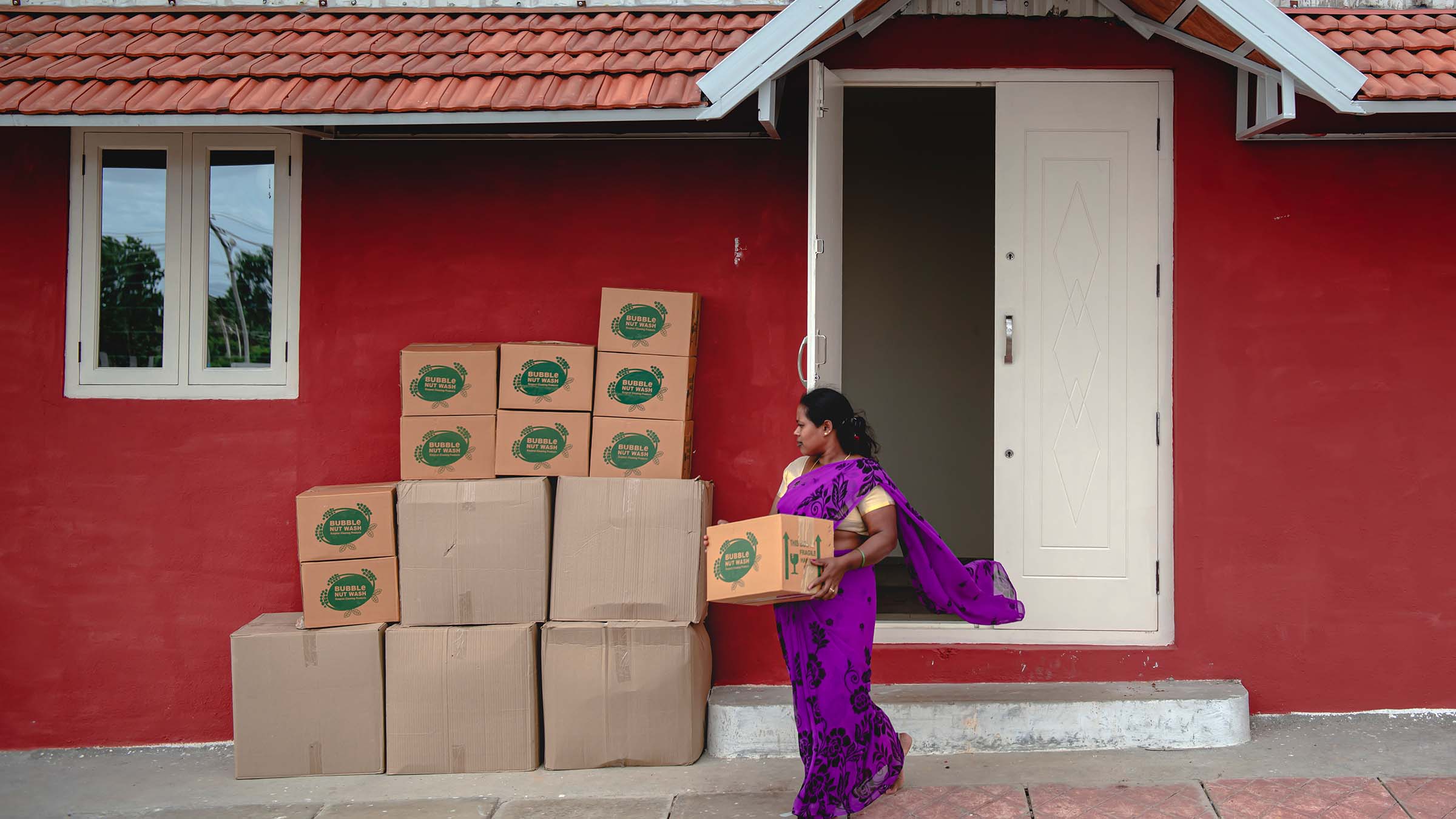BubbleNut Wash

They train women in sustainable harvesting of soapnuts, a local fruit rich in Saponins, a biosurfactant that can be used to manufacture cleaning products. Soapnuts are processed at the company’s pilot plant to extract Saponins using a patentable enzymatic process. Extracts are then formulated into organic and eco-friendly cleaning products.
The enterprise offers a ‘buy-back guarantee’ to marginalised women from indigenous forest communities in the ecologically sensitive areas in Himalayas to procure soapnuts at prices that are 600% higher than those offered by local traders.
- Empowering local indigenous women through trainings and employment, making them the core suppliers of soapnuts
- Reducing the number of local families that cannot afford the recommended calorific value of food from 87% to 7%
- Supporting 104 women to number-mark 3,000+ trees, making them less prone to being chopped down and sequester 60,000 kgs of GHG emissions per year
- Planted 7,500+ trees on rainy season
- Replaced 70,000 litres of non-biodegradable petro-chemical detergents with biodegradable ones
- Increasing income for local indigenous women, from EUR 69 to EUR 279 per family
- Generating over EUR 60,000 cumulative direct income for the local community


Partners
The Forest Department of the local government helps them identify partially deforested areas within the forest range and introduces them to the local communities.
Village Forest Committee decides whether the villagers would like to participate in their program. Sometimes they provide the members with basic infrastructure, such as warehouse.

